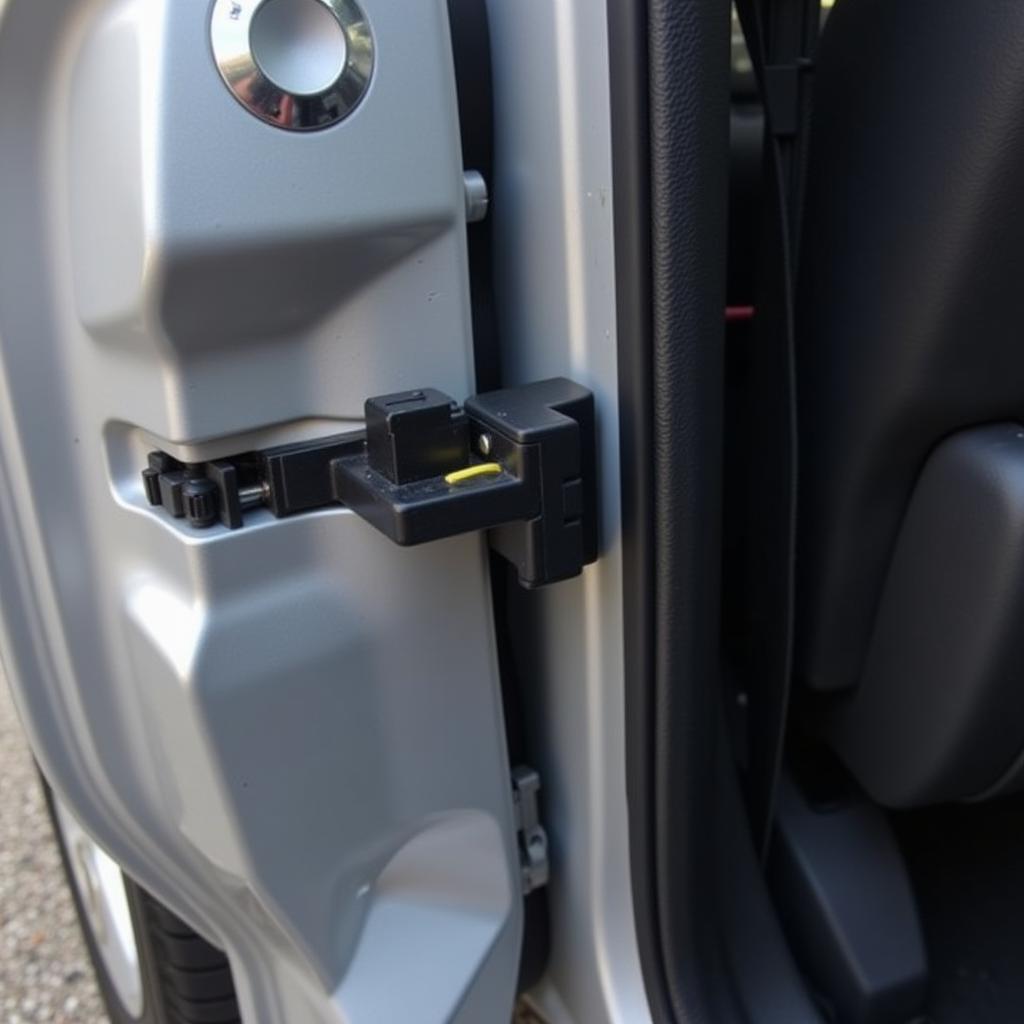The sudden illumination of your air brake warning light can be a jarring experience, particularly for those unfamiliar with its implications. This comprehensive guide delves into the intricacies of air brake warning light indicators, equipping you with the knowledge to diagnose and address potential issues.
Decoding the Air Brake Warning Light
The air brake warning light, typically depicted as a yellow or red circle with a brake shoe icon, serves as your vehicle’s primary communication tool regarding the health of its air brake system. When illuminated, it signals a drop in air pressure within the system, indicating a potential malfunction that requires immediate attention.
Common Causes of Air Brake Warning Light Activation
Understanding the potential triggers behind an air brake warning light is crucial for effective troubleshooting. Here are some common culprits:
- Low air pressure: A leak in the air compressor, lines, or air dryer can lead to a gradual or sudden drop in air pressure, activating the warning light.
- Worn brake components: Over time, brake components like brake shoes, drums, and chambers can wear down, causing air leaks and triggering the warning light.
- Faulty air compressor: The air compressor, responsible for building and maintaining air pressure, can malfunction due to wear and tear, leading to insufficient air pressure and a lit warning light.
- Moisture in the system: Condensation within the air system, particularly in the air dryer, can freeze during colder months, obstructing airflow and causing the warning light to illuminate.
- Electrical issues: Malfunctions in the electrical components of the air brake system, such as wiring harnesses, sensors, or the warning light itself, can lead to inaccurate readings and an illuminated warning light.
Troubleshooting an Air Brake Warning Light
Before attempting any repairs, it’s crucial to diagnose the root cause of the issue. Here’s a step-by-step guide:
- Safety First: Park your vehicle on a level surface and engage the parking brake. Chock the wheels to prevent unintended movement.
- Visual Inspection: Carefully examine all visible air brake components, including the air compressor, air lines, and brake chambers, for any signs of damage, leaks, or loose connections.
- Check Air Pressure: If equipped, use a pressure gauge to check the air pressure in the primary and secondary air tanks. Compare the readings to the manufacturer’s specifications.
- Listen for Leaks: With the engine running, listen carefully for any hissing sounds that could indicate air leaks in the system.
- Consult Diagnostic Tools: For complex issues, utilize diagnostic tools to read fault codes stored in the vehicle’s electronic control unit (ECU). These codes can provide valuable insights into the specific area of malfunction.
Addressing Air Brake System Issues
Depending on the severity and nature of the problem, addressing air brake issues may range from simple fixes to more complex repairs. Here are some potential solutions:
- Tighten Loose Connections: Ensure all air line connections are secure and free from leaks. Tighten any loose fittings using the appropriate tools.
- Replace Worn Components: Replace any damaged or worn-out air brake components, including brake shoes, drums, air chambers, or sections of air lines, with high-quality replacements.
- Repair or Replace the Air Compressor: If the air compressor is faulty, it may require repair or replacement. Consult a qualified technician for proper diagnosis and repair.
- Drain Air Tanks and Dryer: Regularly drain the air tanks and air dryer to remove accumulated moisture and prevent system corrosion.
- Address Electrical Problems: Diagnose and repair any electrical issues affecting the air brake system, such as faulty wiring, sensors, or the warning light itself.
The Importance of Professional Diagnostics and Repair
While some air brake issues may be resolved with basic troubleshooting, it’s essential to emphasize that the air brake system is critical for safe vehicle operation. For complex issues or if you’re uncomfortable performing repairs yourself, seeking assistance from a qualified automotive technician specializing in air brake systems is paramount.
Preventing Future Air Brake Problems
Regular maintenance is key to preventing future air brake system issues. Adhering to the manufacturer’s recommended maintenance schedule for air brake system inspections, component replacement, and system lubrication can significantly reduce the likelihood of unexpected warning lights and costly repairs.
Conclusion
Understanding the significance of air brake warning light indicators is crucial for maintaining the safety and efficiency of your vehicle. By familiarizing yourself with the information presented in this guide, you’ll be equipped to address potential air brake issues promptly and confidently. Remember, a properly functioning air brake system is essential for your safety and the safety of others on the road. If you encounter any uncertainties or require professional assistance, don’t hesitate to consult a qualified automotive technician specializing in air brake systems.

